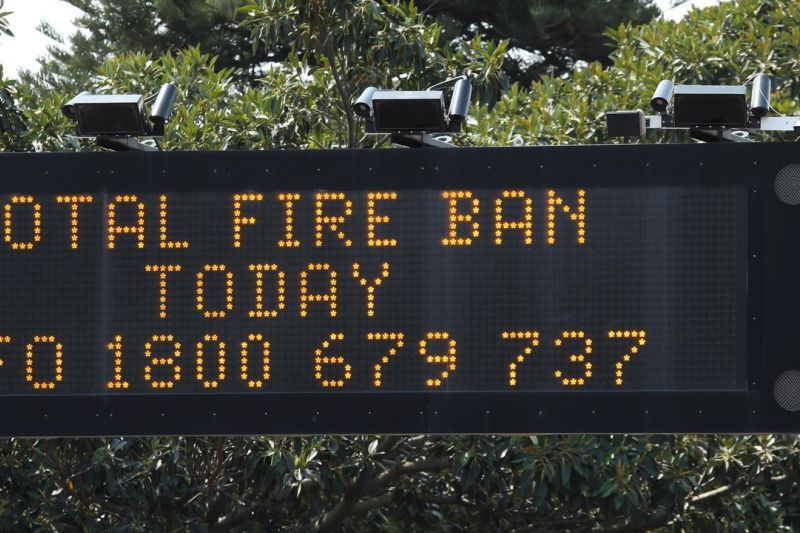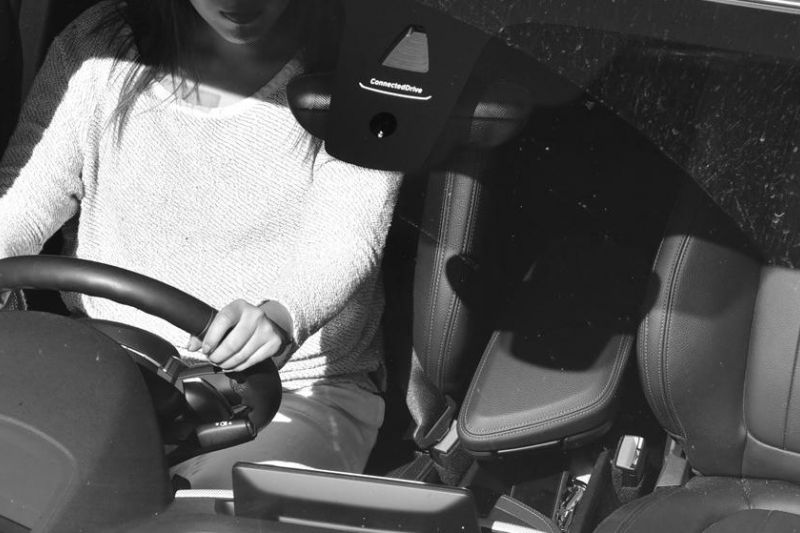You might be surprised to learn that heaps of Australian drivers and road users still don’t buckle up on the road.
That’s even though seatbelt laws came into play more than 50 years ago, with Victoria leading the way on December 22, 1970, and NSW following suit on October 1, 1971. Nationally, legislation was passed that all occupants must wear a seatbelt (or relevant safety harness for those in child-seats or capsules) on January 1, 1972.
- Seatbelt detection cameras are becoming increasingly common
- Fines and demerits apply for not wearing a seatbelt in a moving car
- You can be fined and penalised if your passengers aren’t following the law
There are some loopholes – if your car was never produced with seatbelts you can still drive it, but it is a riskier activity if you do. According to NSW Transport, “wearing a seatbelt doubles the chance of surviving a crash and reduces the risk of injury.”
Some 52 years after the laws were introduced nationally, some Aussies have seemingly decided that wearing a seatbelt isn’t important. Playing devil’s advocate, it is understandable to a degree, as new cars are safer and should (in theory) be more capable of avoiding accidents than older vehicles. But it’s still a dumb thing to do!
The statistics are sobering. Just in NSW, it is stated that about 29 drivers and passengers die each year as a result of not wearing a seatbelt, and an average of 79 people are seriously injured.
As a result, state governments have moved to monitor seatbelt use – not by having more police checking cars that drive by, but instead by using the same sort of cameras that can detect illegal mobile phone use by drivers.
And these cameras don’t just look at the driver – they can see if passengers aren’t wearing belts, too, and the driver can face demerit points and fines (the offending passenger may be slapped with a financial penalty, too).
The contentious part of the seat belt rules regarding these automated fines is not often about whether the occupants are wearing a seatbelt (because they are) but if they are wearing it properly. With thousands of fines issued for improper use of a seat belt.
Here’s a rundown of the states and territories across Australia that have employed seatbelt detection cameras, and some of the potential penalties on offer for offenders who do the wrong thing.
New South Wales
Since December 2019, New South Wales has operated transportable and fixed mobile phone detection camera systems across the state – and those phone detection cameras will soon also be used to enforce seatbelt laws.
“Legislation passed on 29 November 2023 allowing our existing suite of mobile phone detection cameras to enforce seatbelt laws from around mid-2024,” NSW Transport states. “It’s been a requirement to wear a seatbelt in NSW for over 50 years, yet sadly we continue to see lives being lost when someone has decided not to buckle up.
“There won’t be any warning letter period once camera enforcement of seatbelt laws commences. An extensive educational campaign will inform the community about this enforcement change. NSW Police will continue to enforce seatbelt compliance.”
Drivers who don’t wear a seatbelt in NSW, or fail to ensure their passengers are wearing one, will be fined and have demerit points applied. Passengers over 16 years will also be fined for not wearing a seatbelt. The fine is $352 and three demerits apply for the driver, up to a maximum on-the-spot fine of $1487 and six demerits for additional occupants.
In NSW a driver can reverse a vehicle without a seatbelt on, and garbage truck drivers and delivery drivers are exempt from seatbelt laws if travelling under 25km/h.
Queensland
The Sunshine State doesn’t have a sunny disposition when it comes to seatbelt offences, with QLD having rolled out seatbelt detection cameras that may see those breaking the law hit with a $1161 fine and four demerits. You could see that penalty doubled for any passenger not “properly restrained”.
A trial of fixed and portable cameras caught thousands of road users doing the wrong thing, with the first year of operation showing more than 170,000 road users were found to be in the wrong – of those, almost 55,000 were caught either not wearing a seatbelt, or wearing it incorrectly.
By “correctly” or “properly restrained”, it means wearing the seatbelt fastened low on your hip, and ensuring the top strap of the seatbelt is over your shoulder, not tucked under your armpit, not behind you, and definitely not with two people restrained by the same belt.
“An incorrectly worn seatbelt can cause injuries in a crash,” QLD government states. “The cameras use artificial intelligence to detect people committing mobile phone and seatbelt offences. Roadside policing is ongoing and the same penalties apply.”
Around 500 people a day are caught driving without a seatbelt in QLD, netting the government more than half a million dollars a day in fines.
Victoria
Victoria uses camera detection for seatbelts, and those caught on camera could face a $385 fine for not wearing a seatbelt correctly, and 3 demerit points.
The full-scale rollout of seatbelt (and mobile phone) cameras in Victoria commenced in July 2023 following a three-month trial. During that quarter-year period cameras across 200 sites logged, more than 6000 offences and – alarmingly – 45 per cent of those were for seatbelt misuse or non-use.
The Victorian government states “these cameras… can also pick up people in the front seats not wearing their seatbelts”. The state has outlined that, of all fatalities in vehicles in 2022, 17 percent were not wearing a seatbelt, with the majority of seatbelt offences occurring on regional roads, with men more likely to fail to buckle up.
South Australia
South Australia may have recently added mobile phone detection cameras to its road policing arsenal, but there is currently no seatbelt detection employed by the state.
Even so, drivers caught by police for wearing a seatbelt incorrectly or not wearing one at all could face fines of $381 (plus a $60 Victims of Crime levy) and three demerits.
ACT
In the nation’s capital, the government has a number of different camera technologies employed:
- 13 fixed red light/speed cameras
- 13 fixed speed cameras at 9 locations
- 1 point to point speed camera
- 10 mobile speed camera vans
- 3 transportable mobile device detection cameras
- 2 fixed mobile device detection cameras
However, there are currently no seatbelt detection cameras in use in the ACT, but: “It is an offence to drive while not wearing your seatbelt or to permit passengers to travel in your car without seatbelts. As the driver, you are responsible for all passengers in your vehicle. If they do not wear a seatbelt, you will incur a fine and three demerit points.”
Tasmania
Tasmania rolled out its new campaign – “Click. Store. Go.” – as a way to advise drivers of its new mobile phone and seatbelt detection cameras, which have been in play since 21 August 2023.
The portable cameras can detect road users who aren’t wearing a seatbelt or are wearing one incorrectly and impose fines (up to $350) and demerit points (three).
“Unlike distraction, incorrectly wearing a seatbelt is not necessarily the cause of crashes, but it does increase the severity of the injury in the event of a crash. Wearing a correctly fitted seatbelt reduces the risk of being killed in a crash by up to 50 per cent.”
Western Australia
The WA government announced its plans to procure six portable mobile phone detection systems in November 2023, following a successful trial of the technology in 2022.
WA’s high-tech camera detection systems can’t just spot incorrect or non-seatbelt use, though – they are also capable of detecting mobile phone use, speeding, heavy vehicle overspeeding, point-to-point average speed measurement, and they can detect unregistered vehicles.
If you’re caught by a camera or a cop, you could face a $550 fine and four demerits for an unrestrained driver OR passenger, and the penalties get bigger for any additional occupants unbelted.
Northern Territory
The NT doesn’t have any active seatbelt (or mobile phone) detection cameras as yet, but the transport authority is looking into the technology.
From the NT government’s driving offences list:
As the driver of a vehicle, you must make sure all passengers are properly restrained in a seat belt or approved child restraint. The following fines apply:
- Driver fails to ensure a child is appropriately restrained – $500 fine, three demerits
- Driver not wearing a seat belt – $500 fine, three demerits
- Adult passenger (aged 16 and over) not wearing a seat belt – $500 fine
Not intended as legal advice. Check with the relevant roads authority in your state or
Territory.






